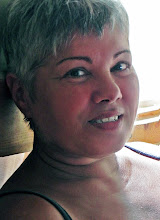 He lost a lung, survived a near-fatal illness, and had a hip operation, but kept working, energized partly by disdain for his detractors. “I’m not going to let them disrupt my old age,” he said.
He lost a lung, survived a near-fatal illness, and had a hip operation, but kept working, energized partly by disdain for his detractors. “I’m not going to let them disrupt my old age,” he said.“I am an example of publicity — a great deal of it,” he also said. “I’m grateful because it gives me the freedom to go and try to do better. But I never had any great idea that these people are understanding what I’m doing. And they don’t.”
Wyeth added: “Let’s be sensible about this. I put a lot of things into my work which are very personal to me. So how can the public feel these things? I think most people get to my work through the back door. They’re attracted by the realism and they sense the emotion and the abstraction — and eventually, I hope, they get their own powerful emotion.”
"I think one's art goes only as far and as deep as your love goes," he said in an interview.
"I don't paint these hills around Chadds Ford because they're better than the hills s omewhere else. It's that I was born here, lived here - things have a meaning for me," Wyeth added of his home town.
omewhere else. It's that I was born here, lived here - things have a meaning for me," Wyeth added of his home town.
"I don't paint these hills around Chadds Ford because they're better than the hills s
 omewhere else. It's that I was born here, lived here - things have a meaning for me," Wyeth added of his home town.
omewhere else. It's that I was born here, lived here - things have a meaning for me," Wyeth added of his home town. "I do an awful lot of thinking and dreaming about things in the past and the future - the timelessness of the rocks and the hills - all the people who have existed there," he said.
In 2007, he received the National Medal of Arts from President George W Bush and became the first artist to be granted the Presidential Medal of Freedom.
 Wyeth plugged along painting trees, barns, animals and people. What the critics who so harshly attack or dismiss his work miss is that the works were not about just the tree or the person. They were about his relationship to the object or person, but had universal overtones that go with the privilege of individual viewer interpretation.
Wyeth plugged along painting trees, barns, animals and people. What the critics who so harshly attack or dismiss his work miss is that the works were not about just the tree or the person. They were about his relationship to the object or person, but had universal overtones that go with the privilege of individual viewer interpretation. 



